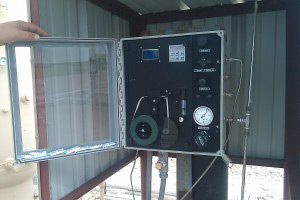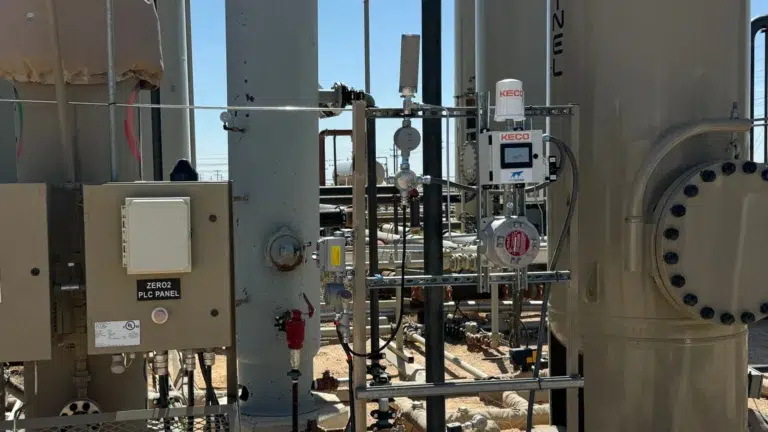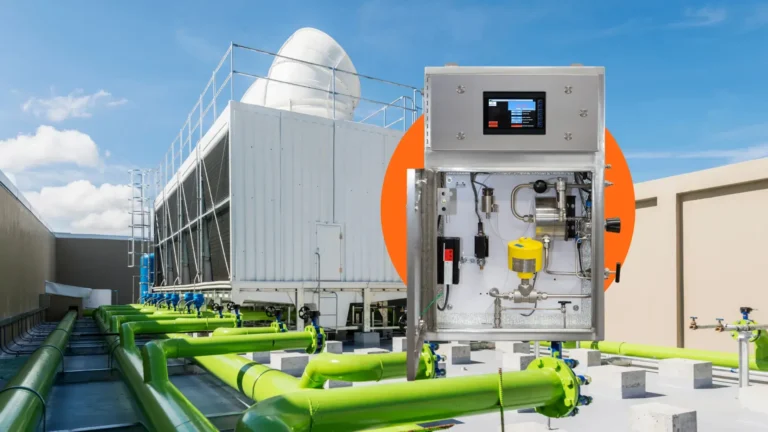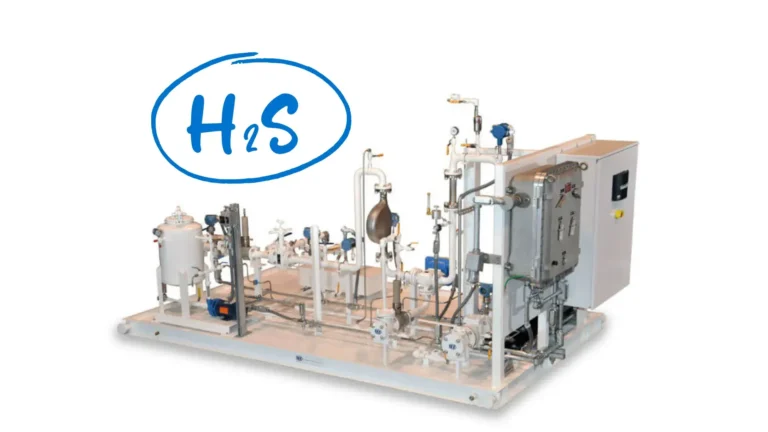How to Prevent Process Analyzer Downtime in Wet Weather
October 18, 2015
Wet weather can wreak havoc on process analyzers installed outdoors.
If it’s your responsibility to ensure process analyzers are running smoothly, there are easy steps you can take to prevent analyzer downtime in wet, rainy weather.
This H2S analyzer is properly prepared for wet weather.
It is installed in a 3-sides shelter with a roof and has desiccant bags placed inside the analyzer’s cabinet.[/caption]
Not all process analyzers installed outdoors in the field are protected from the elements. Many analyzers have no analyzer shelter to protect them and to build one would be cost prohibitive. This can cause a lot of trouble for you if it’s your job to keep the analyzers up and running. If you can’t afford a full analyzer shelter, consider installing a simple shelter with a sloping roof that blocks rain and direct sunlight from hitting the analyzer.
Perhaps you could even install “half-way” sides on the back and the sides of the simple shelter. This can go a long way in protecting your analyzer.
After a basic shelter for the analyzer has been installed, it’s still possible to get moisture buildup inside the analyzer’s enclosure due to condensation. Condensation occurs when the temperature outside is warmer than the temperature inside the analyzer’s enclosure. Condensation could lead to electrical shorts, tape breaks, and clouding of sensor optics or mirrors which requires cleaning. Moisture can also disable scrubbing media that may be used by your process analyzer.
One method of preventing condensation is to install a heater and thermostat in the analyzer’s enclosure. If this is out of the question, simply put desiccant bags inside the enclosure. A desiccant is a hygroscopic substance that induces or sustains a state of dryness (desiccation) in its vicinity, including any moisture that may build up in the enclosure. Just be sure to replace the desiccant bags periodically.
You should also ensure the sample going to your analyzer is clean and dry.
Remember, an analyzer is only as good as it’s sampling system.
To ensure your analyzer is receiving a clean and dry sample, we would be happy to design a sampling system for your analyzer. Just give us a call.
Pay careful attention to solid state type analyzers in wet weather including analyzers that utilize the UV and laser absorption spectroscopy method of analysis. The optics or mirrors in these types of analyzers have a tenancy to fog up or condense in wet weather which will result in inaccurate measurements without operator warning.
The optics or mirrors are located in the sample cells. When a cold sample (say LPGs) flows inside the sample cell and there is warm, wet weather outside the cell, condensation tends to form on the optics or mirrors. Clearing the condensation is often a laborious task that takes a skilled operator to perform.
Luckily, lead-acetate tape method analyzers that measure for hydrogen sulfide are very simple analyzers and few things can go wrong even in wet weather.
Unlike other analyzer types, tape method H2S analyzers only requires low moisture inside the analyzer’s cabinet so that the tape reels don’t become wet.
It is a simple task to keep the tape reels dry.
Following the tips mentioned above will result in a dry analyzer cabinet and will keep your analyzer online through all the wet weather your analyzer may experience.
Request a Budgetary Quote for Your Application
Provide your project specifications, industry details, and end-use location to receive a tailored pricing estimate from our team.
Request Budgetary Price





